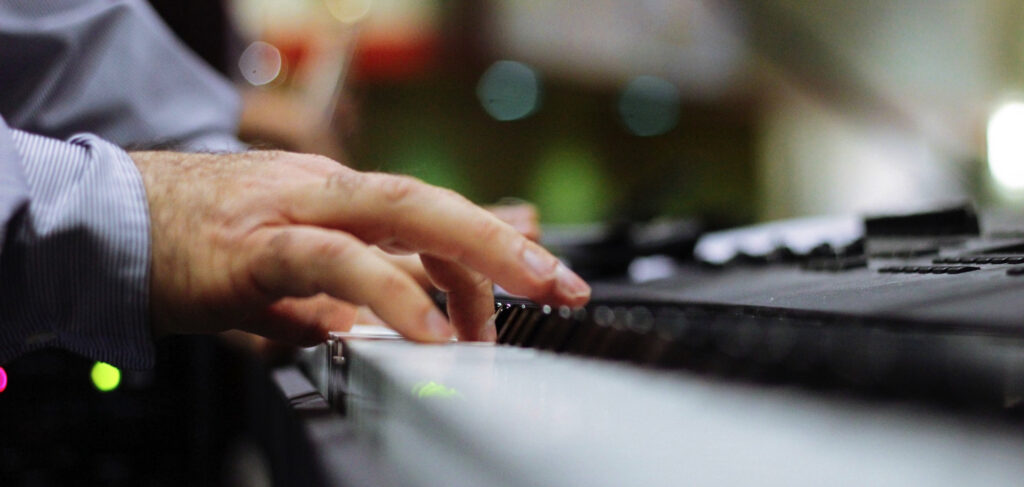By Hermes Camacho

Every music major takes at least one musicianship class in their college career (also called ear-training or aural skills), with most students dreading the dictation exercises above all else. Many have a difficult time with dications even during in-class practice, let alone during a quiz or an exam. Over the 10+ years I’ve taught musicianship as a TA, AI, and Lecturer, I’ve observed a few less than obvious, yet relatively simple and effective tactics that can make an immediate improvement on students’ dictation performance.
Sit and just (actively) listen. With so few hearings ahead of you, your natural instinct is to jot as much as you can from the get-go. However, there are significant advantages to allowing yourself to focus on listening to the dictation once through, with little or sometimes even no jotting down of any notes. This accomplishes a couple of things. 1) It allows you to hear the melody or progression from start to finish as a complete musical statement, instead of a fragment or fragments. There’s so much with which you can intuit and guess if the “picture” is coherent and complete from the beginning. 2) You have a greater chance of memorizing the melody or progression, with a higher rate of accuracy. This allows you to “playback” the example in your head as many times as needed in between listenings.
Don’t write things completely down — use shorthand. Drawing complete noteheads, stems, beaming, rests, etc. can significantly slow down and interfere with your listening, so only notate the very bare minimum during a hearing. There are numerous techniques that you can employ (such as protonotation or durational spacing), but whichever shorthand you choose, make sure it allows you to focus on getting the gist during the actual playing of the example. Leave the writing of the more complete dictation between listenings.
Guess, guess, guess — even if you start making stuff up. Seems crazy to think that you should potentially write down an incorrect answer, but it can be noticeably easier to correct a notated mistake than it is to write the melody down on blank staff paper by plucking it from thin air during each listening. Think of it this way: when you dictate an example for the first time, you’re relying primarily just on your ear to determine what you’re hearing as well as your immediate-to-short term memory. When you add a visual component to the example, even if it’s incorrect, you’re giving yourself (and your memory) a break by relying on two separate senses that naturally piggyback off of one another. By comparing what you see to what you’re hearing, you’re validating both the correct and incorrect portions of the example and reducing the amount of guessing on each subsequent hearing.
None of the tips I suggested above are ground-breaking, but it always surprises me how few students attempt even one of these during practice sessions in class. Give one of these a try during your next class session and see if it might help you in the longterm. Remember, too, that one attempt is not a large enough sample size to determine it’s success or failure. The longer you keep at it and practice, the more comfortable it becomes and, more importantly, you’ll start develop your take on each of these approaches. Happy listening!